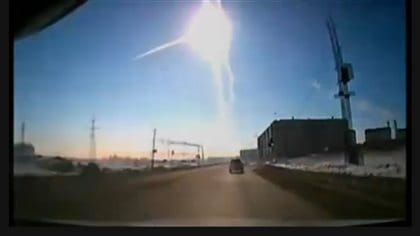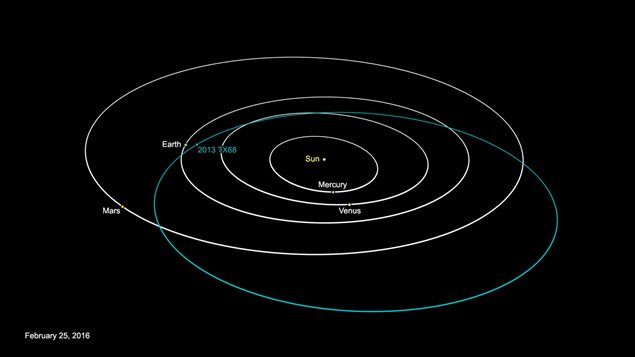
When Asteroid 2013 TX68 was first spotted, there was concern about how close it might come to earth. The asteroid was small and, because of its position in relation to the sun, was visible for only a brief time. But scientists found another way to calculate its trajectory and to determine that it will not hit the earth on March 8, 2016 or in the next century.
‘Amazing detective work’
“What NASA has done…(is) some amazing detective work,” says Andrew Fazekas, an astronomy columnist with National Geographic who calls himself the Night Sky Guy. “They were able to scour image archives from some of the largest telescopes around the world of images taken before the discovery in 2013 of this asteroid.
“They actually discovered pictures that were 10, 15 years old and found the pinpoint image of this asteroid amongst the fixed background of stars. And they put those other pre-discovery images into the data set, allowed the computer to crunch the numbers and determined there is absolutely no chance of it colliding with us.”
Listen
Bigger than Siberian asteroid
On March 8, this asteroid will fly by roughly 5 million kilometres from earth. It could pass closer, but not more than 24,000 kilometres above the earth’s surface, says NASA. Were it to come closer and hit the earth, we have a precedent that indicates such an asteroid could cause considerable damage.
Three years ago, an asteroid measuring 20 metres streaked through the atmosphere and exploded 30 km above Siberia. The fragments and shock wave blew out windows, toppled walls, and injured some 1,500 people. Asteroid 2013 TX68 measures 30 metres and so, would pack half again as much energy.
Only 1% of small meteors tracked
While 99.9 per cent of very large meteors—those larger than 500 metres—have been found and are being tracked, only one per cent of small ones have been surveyed. Scientists are trying to get funding to be able to track them and they hope the discovery of Asteroid 2013 TX68 will bolster their case.







For reasons beyond our control, and for an undetermined period of time, our comment section is now closed. However, our social networks remain open to your contributions.